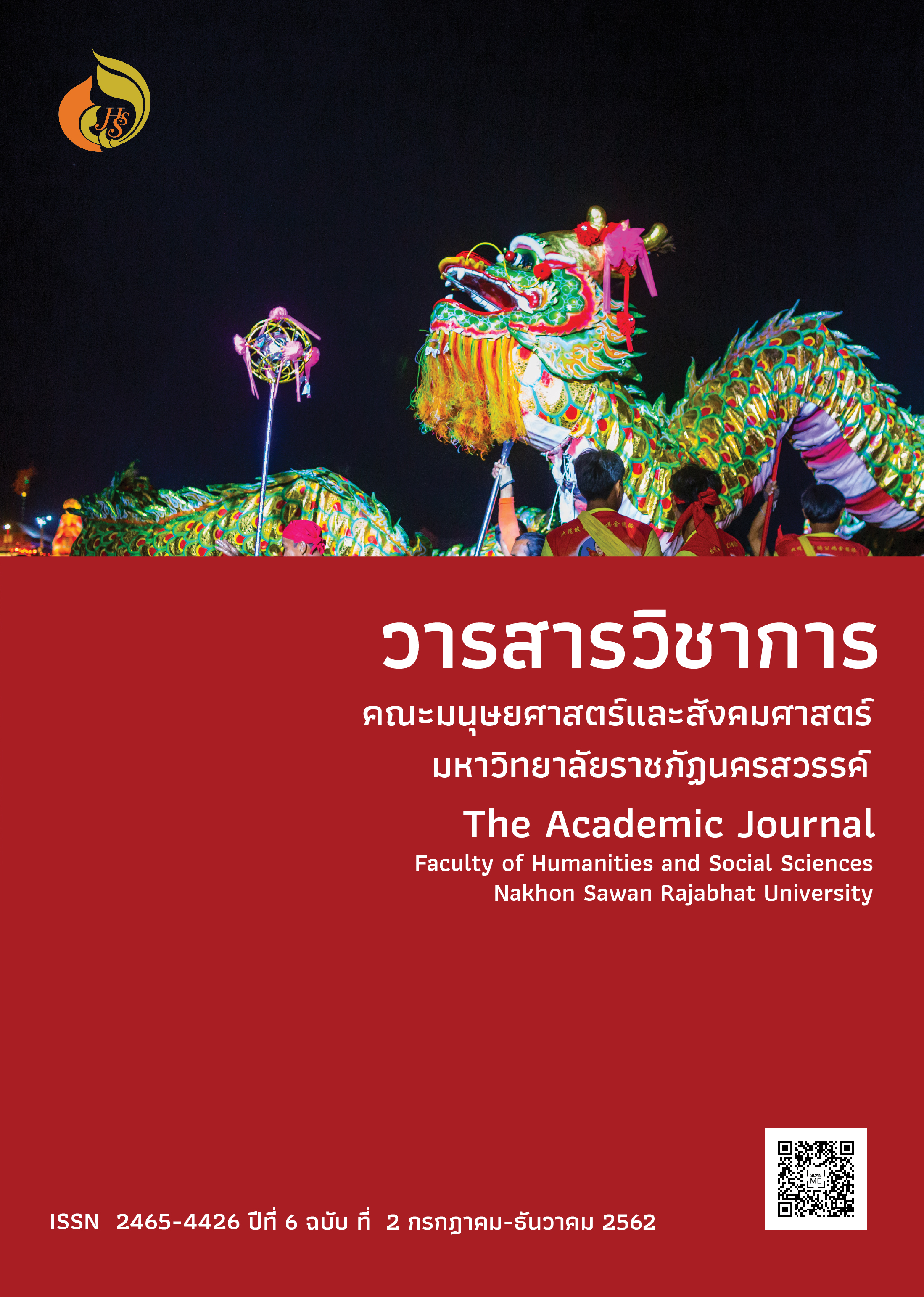The Development of English Speaking Skills Using the Triangulation Teaching Techniques for Thai EFL Students: Preliminary Results
Main Article Content
Abstract
This thesis investigates the effectiveness of Triangulation Teaching Techniques in improving Thai EFL students’ English speaking skills and the students’ opinion towards the use of Triangulation Teaching Techniques and develops for improving students’ English-speaking skill. The findings of this preliminary result reveal that the effects of Triangulation Teaching Techniques on students’ language proficiency in terms of oral communicative competence and motivation toward learning English as a foreign language in a heterogeneous class. The experimental group taught in Triangulation Teaching Techniques. The pilot study students for this study consisted of 6 undergraduate students, selected by means of purposive random sampling technique, from a class of Bachelor of Accountancy, the fourth-year students who enroll during Business English 2 in semester 1 of the academic year of 2017, Faculty of Management Sciences, Nakhon Sawan Rajabhat University. This study employed a qualitative case study research design. The data collected through 4 sessions were 1) pre-test and post-test, 2) audiotape with transcribed, 3) results of the English motivation questionnaire and 4) A survey of students’ satisfaction of English speaking skills using the Triangulation Teaching Techniques for Thai EFL students’ questionnaire. The results show that the participants experienced a middle level of EFL speaking when doing the tasks. Furthermore, the researcher also found that the three main causes of EFL speaking for the pilot study group emerged from this study: 1) the problematic nature of speaking skills, 2) the classroom atmosphere, and 3) the lowest English proficiency of the students. The results obtained from the pilot test were not included in the findings of this study.
Article Details
References
International Studies, Prince of Songkla University, Phuket.
Retrieved November 14, 2016, from https://fis.psu.ac.th/jis_file/res_project/2010_woralak.pdf
Cohen E. (1994). Designing Groupwork: Strategies for the Heterogeneous Classroom.
Teachers College Press, Columbia University; New York.
Dörnyei, Z. (1994). Motivation and motivating in the foreign language classroom.
Modern Language Journal, 78(3), 273-284.
Ellis, B. and Brooksbank, A. (2016). Bob Ellis. Collingwood: Schwartz Publishing Pty. Ltd. Gardner, R. C (1985). Social psychology and second language learning: The role of
attitudes and motivation. London: Edward Arnold.
Jacobs GM, McCafferty SG. (2006). Connections between cooperative learning
and second language learning and teaching, in: S. G.
McCafferty, G. M. Jacobs & A.C. DaSilvaIddings (Eds). Cooperative Learning and
Second Language Teaching. (Cambridge, Cambridge University Press),
18-29.
Kagan, S. (1995). We can talk: Collaborative learning in the elementary ESL
classroom. Eric Clearinghouse on Language and Linguistics, ED382035.
Krashen, S. (1985). The Input Hypothesis: Issues and Implications. London: Longman.
Prachanban, P. (2009). Advanced Statistics for Research and Evaluation. Phitsanulok:
Naresuan University.
Slavin, Robert E. (1995). Cooperative Learning Theory, Research and Practice.
2nd ed. Massachusetts : A Simon & Schuster.
Swain, M. (1985). Communicative competence: Some roles of comprehensible
input and comprehensible output in its development. In Gass.
S. and Madden, C. (Eds.). Input in Second Language Acquisition, p. 235-256.
New York: Newbury House.


